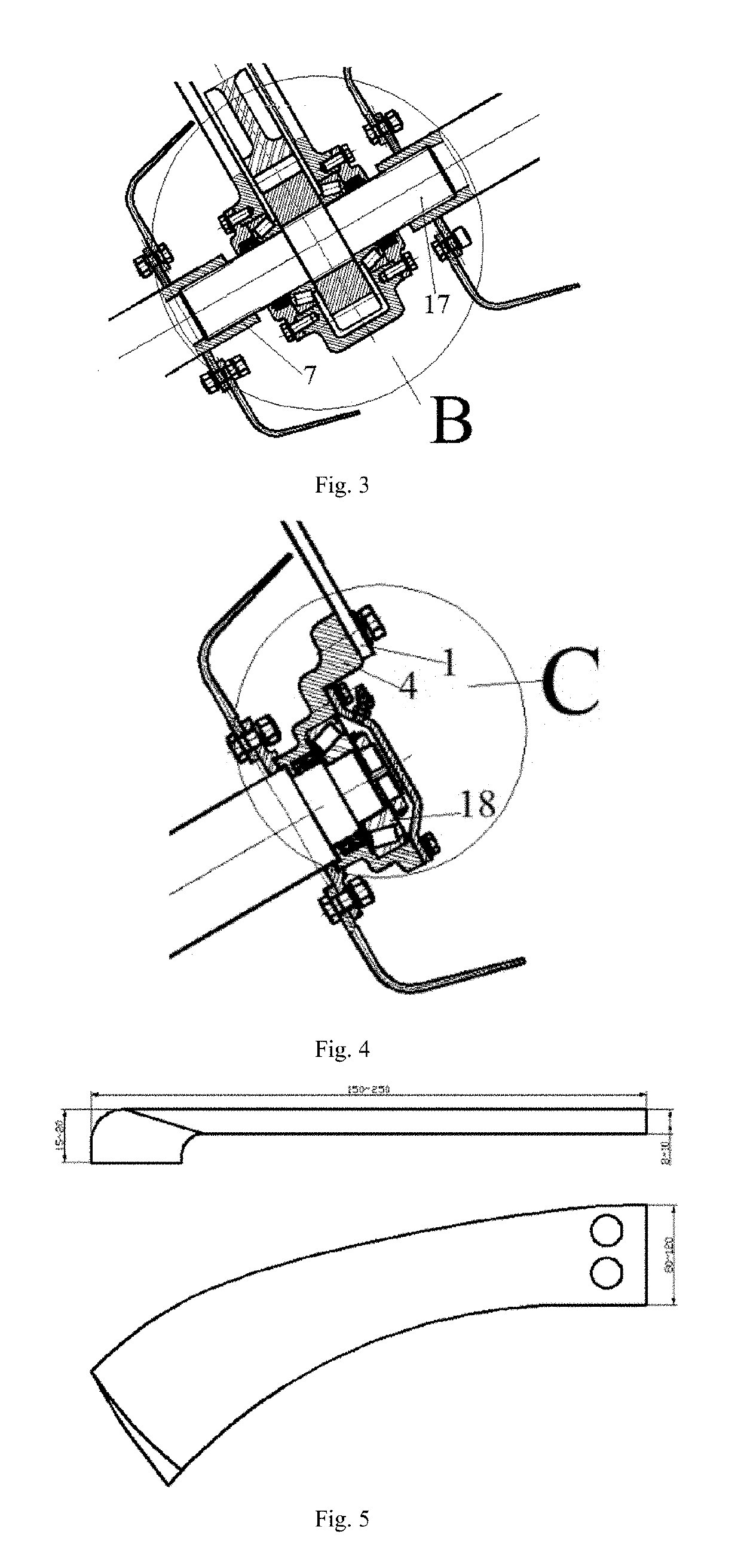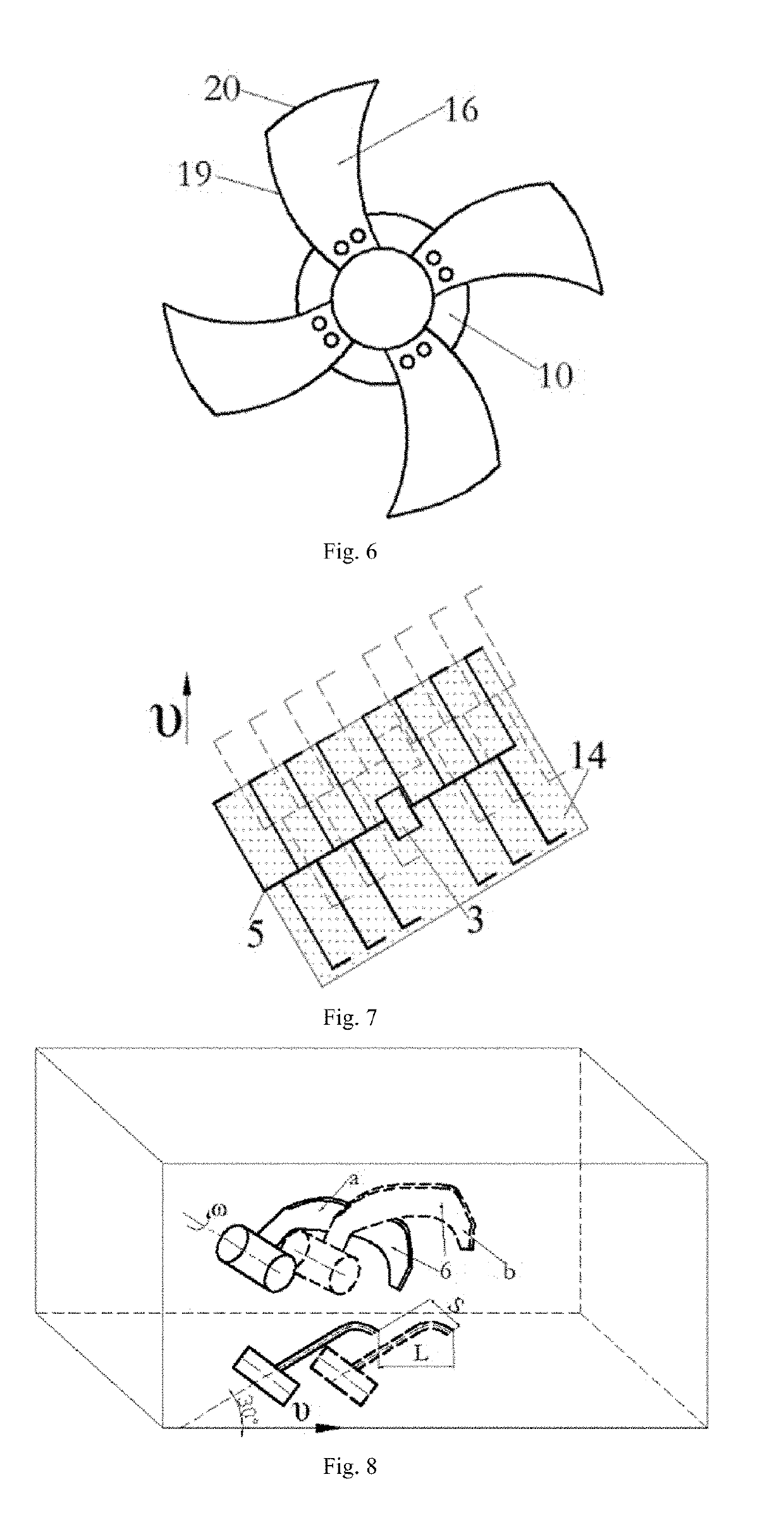An oblique submerged reverse deep rotary tillage device
a rotary tiller and reverse technology, applied in the field of rotary tillers, can solve the problems of heavy-duty soil tillage, high energy consumption, complicated tilling process, etc., and achieve the effects of reducing re-tillage and power consumption, improving tillage depth, and improving tillage depth
- Summary
- Abstract
- Description
- Claims
- Application Information
AI Technical Summary
Benefits of technology
Problems solved by technology
Method used
Image
Examples
Embodiment Construction
[0041]Further to the drawings as well as specific examples presented below, but the scope of the invention is not limited to this.
[0042]As shown in FIG. 1, FIG. 3 and FIG. 4, the oblique submerged reverse deep rotary tilling device of the invention includes a stander 1, a mounted frame 2, a gearbox 3 and an oblique blade roller 4. The oblique submerged reverse deep rotary tilling device is connected to the tractor through a mounted frame 2, and the mounted frame 2 is connected to the frame 1. The gearbox 3 is positioned at the center of the device, and the power output shaft of the tractor drives the power input shaft of the gearbox 3 through a universal joint. The power output shaft 17 of the gearbox 3 is a splined shaft, and both ends of the power output shaft 17 are respectively connected with one end of the oblique blade roller shaft 7 on both ends. And the other end of the oblique cutter roller shaft 7 is configured in the bearing 18 located in the bearing seat 4, and the beari...
PUM
 Login to View More
Login to View More Abstract
Description
Claims
Application Information
 Login to View More
Login to View More - R&D
- Intellectual Property
- Life Sciences
- Materials
- Tech Scout
- Unparalleled Data Quality
- Higher Quality Content
- 60% Fewer Hallucinations
Browse by: Latest US Patents, China's latest patents, Technical Efficacy Thesaurus, Application Domain, Technology Topic, Popular Technical Reports.
© 2025 PatSnap. All rights reserved.Legal|Privacy policy|Modern Slavery Act Transparency Statement|Sitemap|About US| Contact US: help@patsnap.com



